Raw Wool
The raw wool contains everything left in there when the sheep is shorn. Including insects, flora and things from the stable floor.
Before one dares to work the wool either with drop spindle or with wool combs, it has to be sorted and cleaned. A sheep's fleece is not of homogeneous quality; the wool on the legs, belly and neck usually is shorter, somewhat felted and often contains more dirt. Back, flanks and breast usually have better wool. If sorting did not happen during shearing, it should be done as soon as possible afterwards. The sorted wool then has to be cleaned. Often it is enough to just rinse it with cold (rain) water several times. Warm water and soap should be avoided. Firstly, the wool would felt in the warm water and become unusable for spinning. Secondly, the soap would remove all the lanolin from the wool.
The latter could be desirable, however, if the amount of lanolin is very high. When spinning, the fibers would then stick to one another and make working harder. Is the wool to be dyed, could the end result be improved if some of the lanolin is removed first. But if the wool is destined to become waterproof rain clothing, a high amount of lanolin is what you would want to have.
Most of our wool comes from two sources where we know the sheep "personally". Alas, the first doesn't exist anymore. It was situated in Brittany - a small flock of Ouessant (Breton Dwarf) sheep and a white sheep called "Beppie" (neither we nor the owner knew the breed). The second source is a small flock of East Friesian sheep from Remscheid. For some variety, we sometimes buy combed wool form Nordic breeds like Gute-, Island-, Jakob- or Shetland sheep.
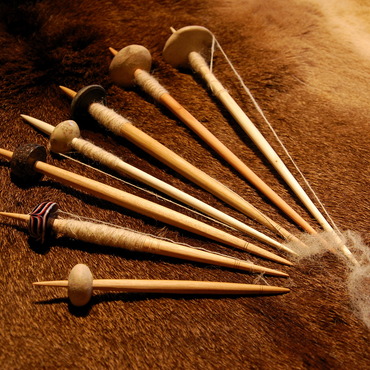
Levels of Textile Production
According to Eva Andersson Strand, four different levels of textile production can be distinguished.
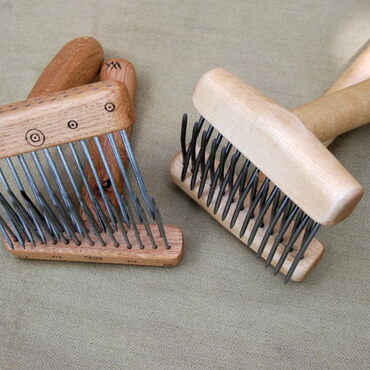
Combing
By combing, the wool is being prepared for spinning.
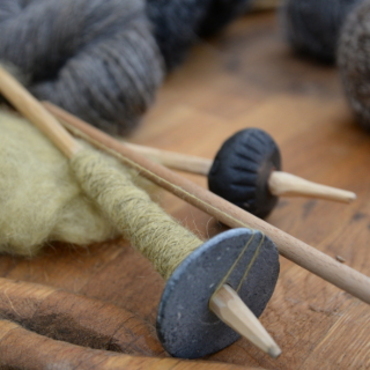
Spinning
With the spindle, the wool is spun into a thread.
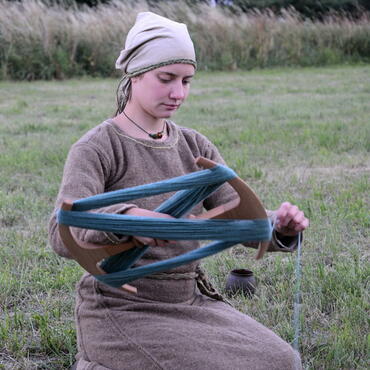
Using a niddy noddy
After spinning, the yarn might be wound onto a niddy noddy.
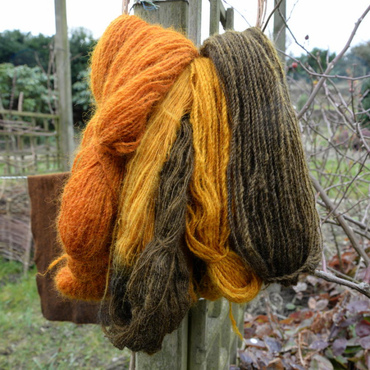
Dyeing
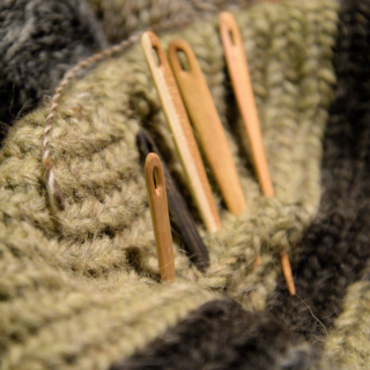
Nalbinding
Different garments can be produced with this old technique.
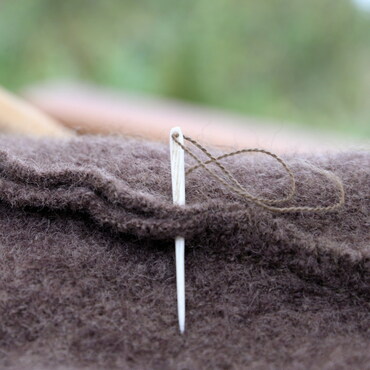
Sewing
Finally, pieces of cloth are sewn into garments.